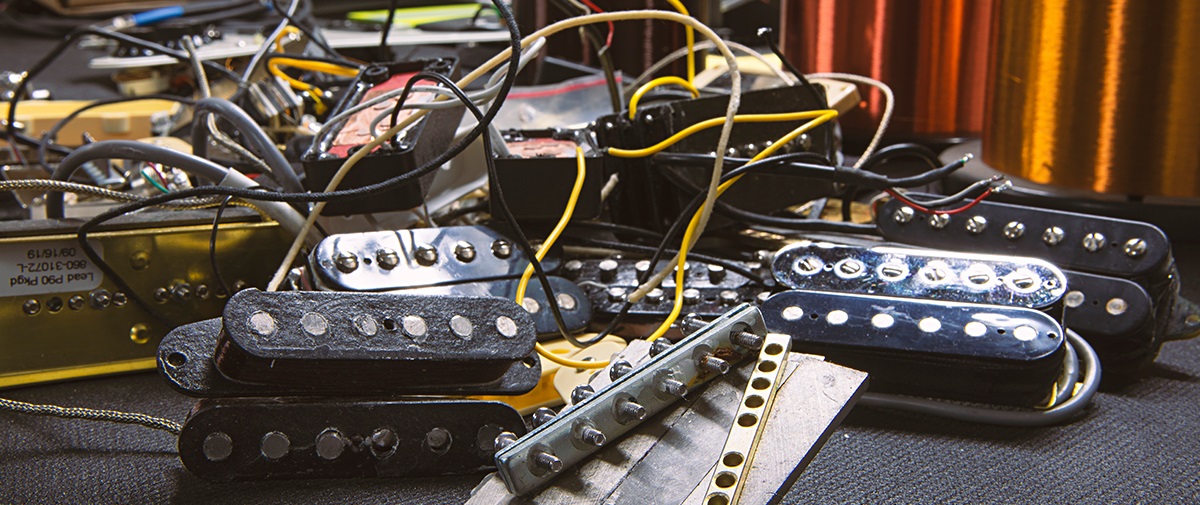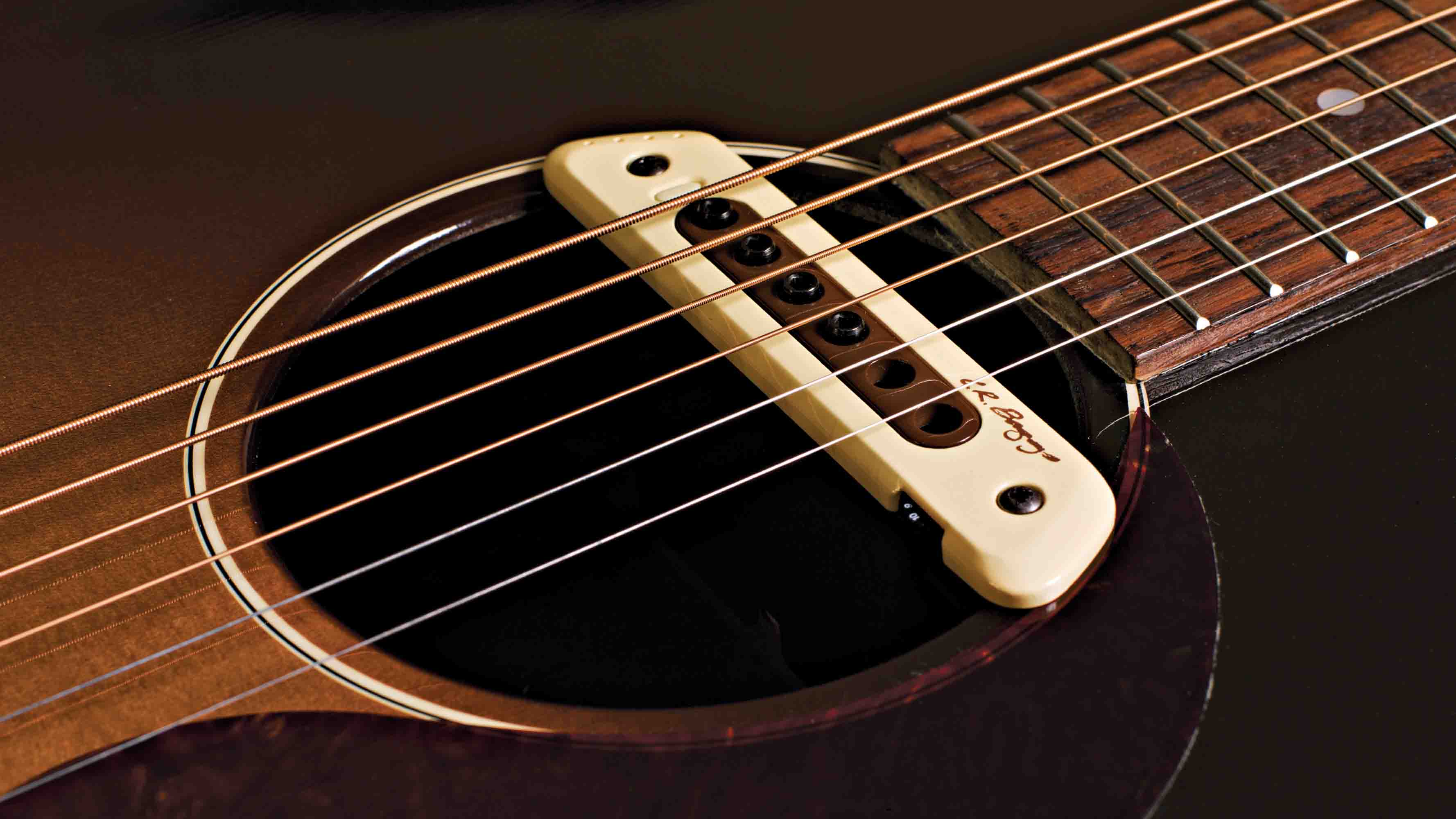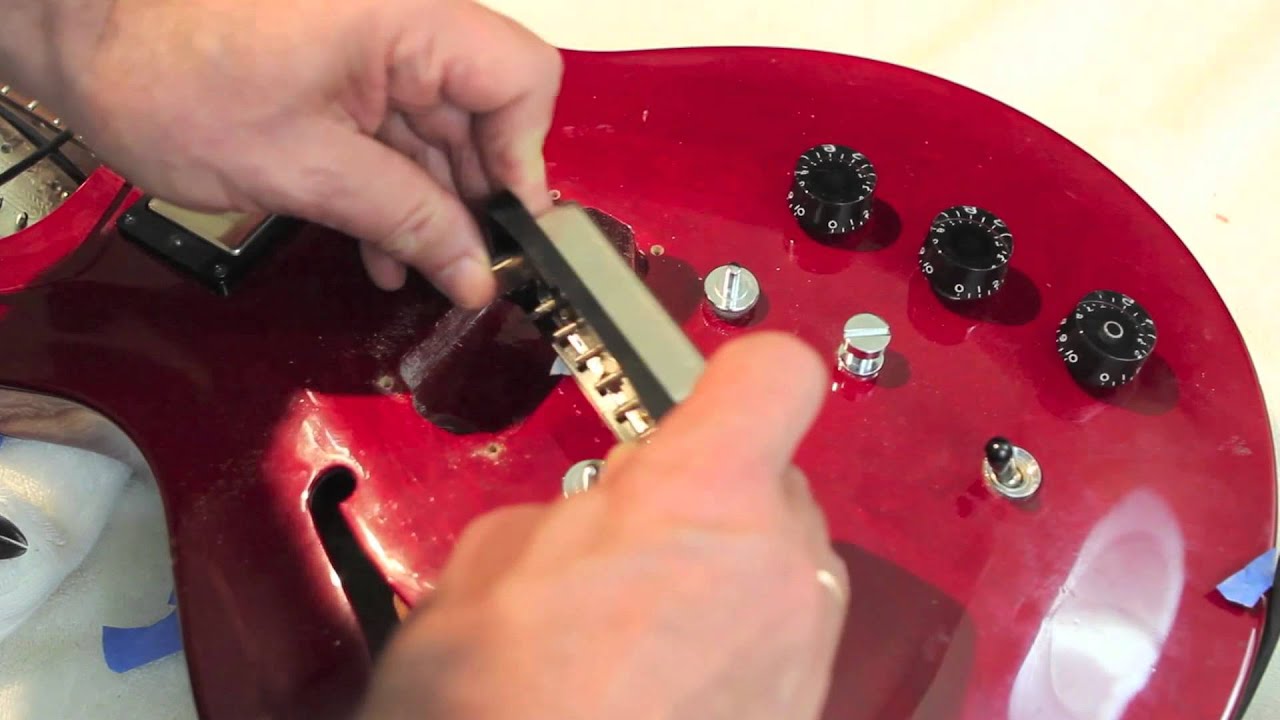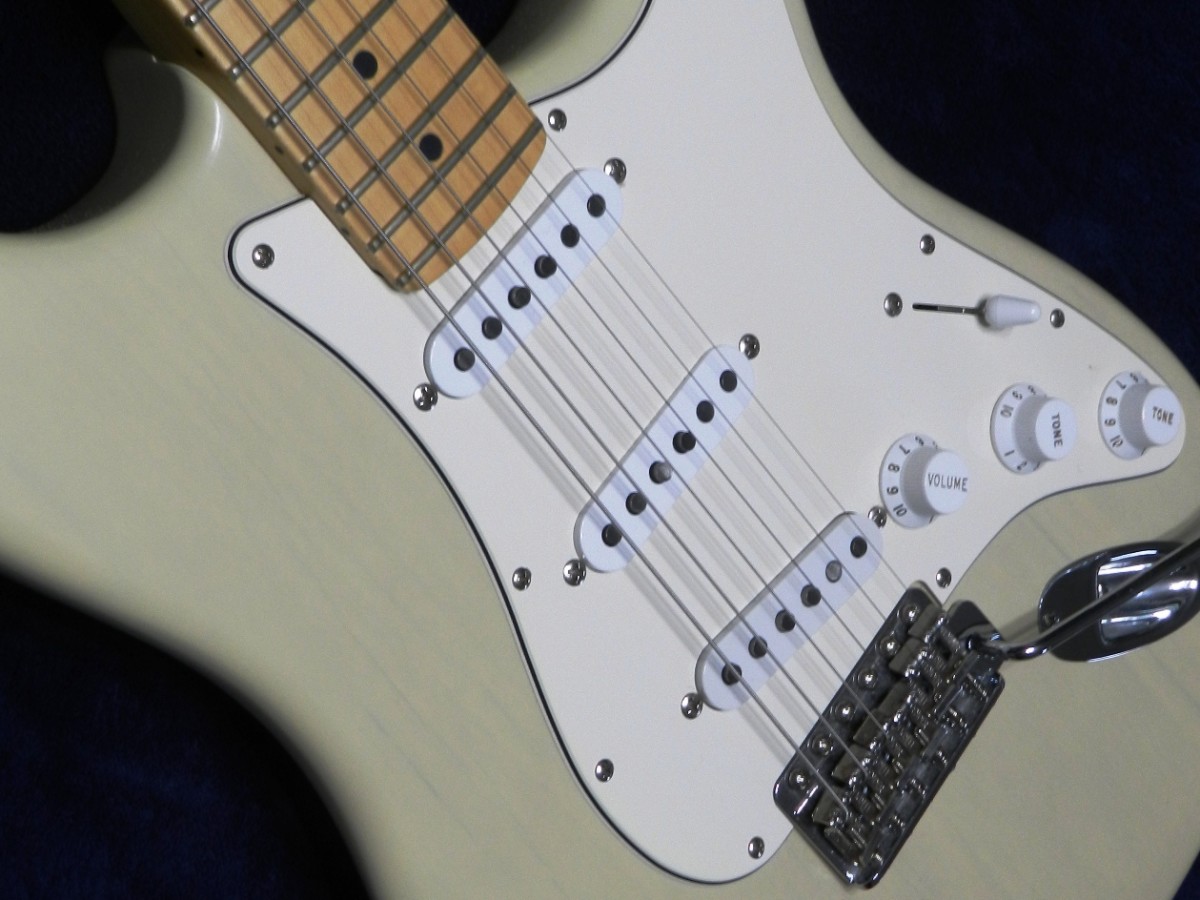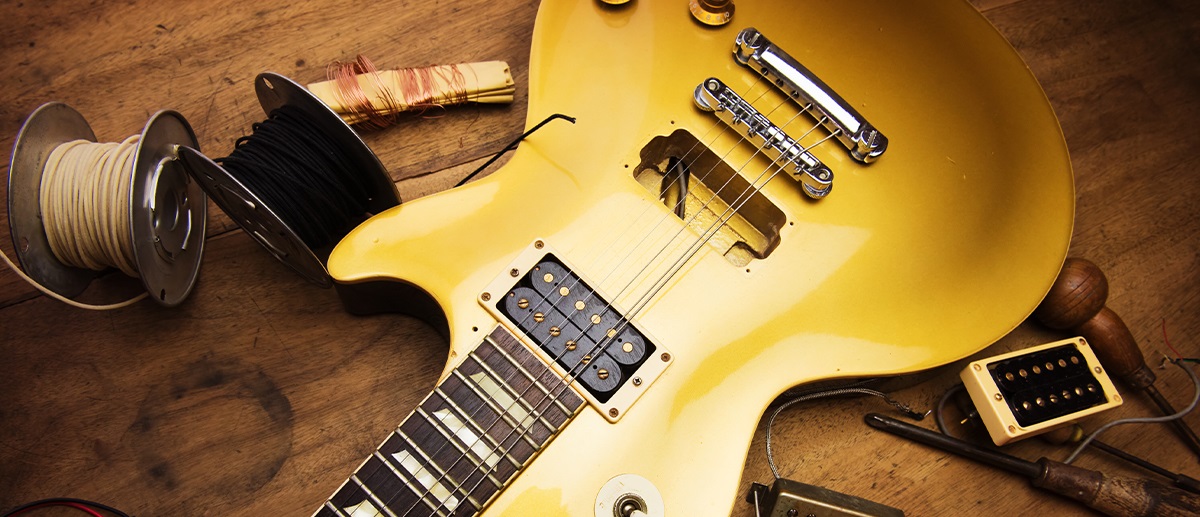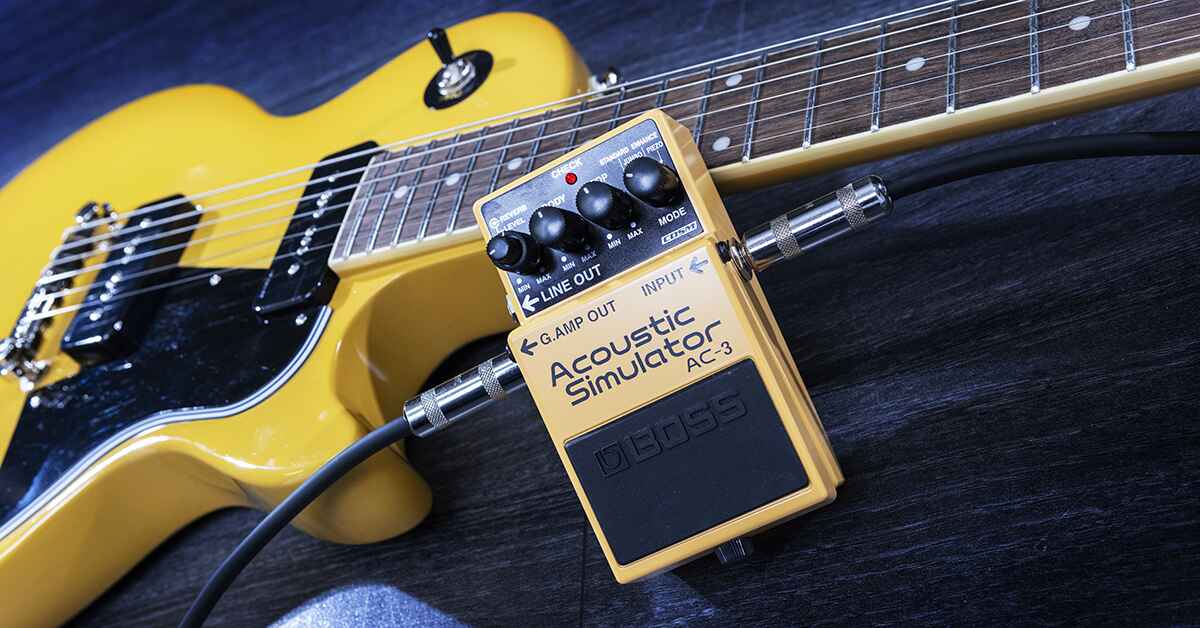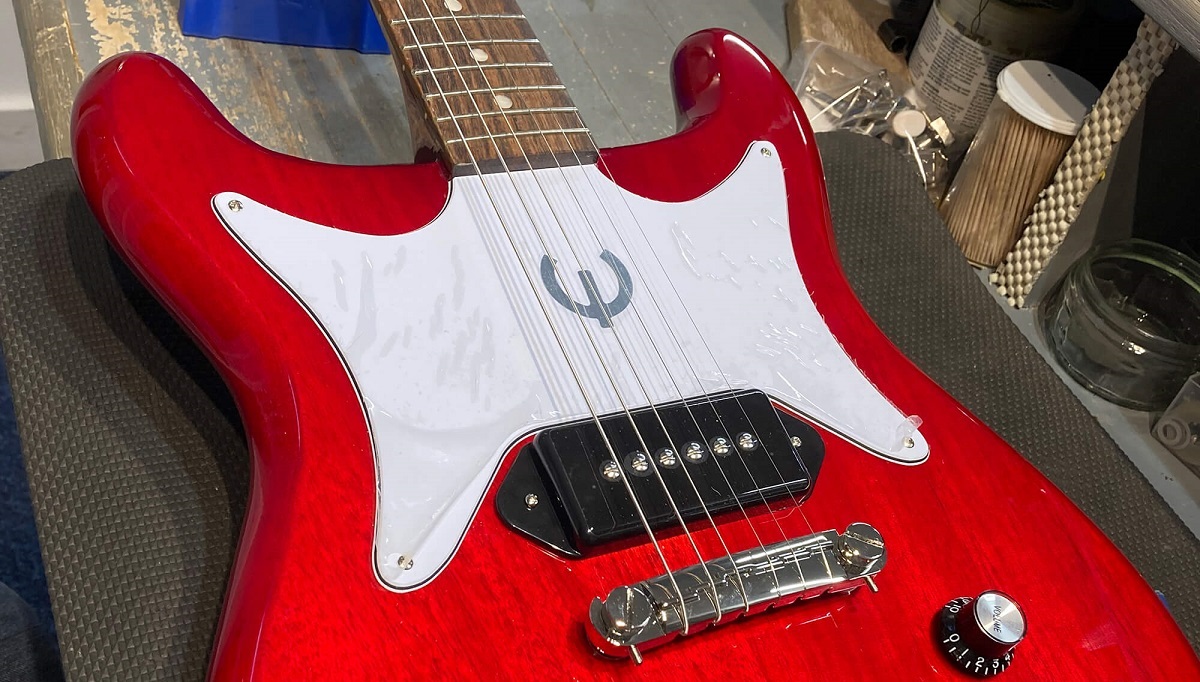Introduction
Are you captivated by the electrifying sound of an electric guitar? Ever wondered how those mesmerizing tunes are produced? Look no further, as we delve into the heart of the matter – the electric guitar pickup. This essential component of the electric guitar is the unsung hero behind the captivating melodies and powerful riffs that define rock, blues, and many other music genres.
The electric guitar pickup is a fascinating and pivotal element that plays a crucial role in converting the vibrations of the guitar strings into electrical signals, which are then amplified to produce the iconic sound that resonates with music enthusiasts worldwide. Understanding the inner workings of this ingenious device not only deepens one’s appreciation for the instrument but also sheds light on the intricacies involved in crafting the perfect tone.
In this comprehensive guide, we will unravel the mysteries of electric guitar pickups, exploring their functionality, different types, and the factors influencing their performance. By the end of this journey, you will have a newfound understanding of how these unassuming components contribute to the soul-stirring music that has the power to move us. So, let’s embark on this enlightening expedition into the realm of electric guitar pickups and uncover the magic behind their melodious charm.
What is an Electric Guitar Pickup?
An electric guitar pickup is a transducer that captures the vibrations of the guitar strings and converts them into electrical signals. This ingenious device is the cornerstone of the electric guitar’s ability to produce amplified sound. Unlike acoustic guitars, which rely on the resonance of the hollow body to amplify the sound, electric guitars use pickups to capture the string vibrations and transform them into electrical signals that can be amplified and manipulated to create various tones and effects.
Essentially, the pickup “picks up” the string vibrations and converts them into electrical impulses, which are then sent to an amplifier. The pickup consists of a magnet wrapped with a coil of wire, and when the guitar strings vibrate within the magnetic field, a small current is induced in the coil. This current is then carried through the guitar’s output jack to the amplifier, where it is converted back into sound waves that we hear through the speakers.
It’s important to note that the pickup’s design and placement significantly influence the tonal characteristics of the guitar. Different types of pickups offer distinct tonal qualities, allowing musicians to achieve a wide range of sounds and textures. Understanding the nuances of pickup construction and their impact on the guitar’s sonic output is crucial for musicians and enthusiasts seeking to tailor their instrument’s sound to their preferences.
In essence, the electric guitar pickup serves as the bridge between the physical vibrations of the strings and the electrifying sounds that emanate from the amplifier. Its role in shaping the sonic identity of the electric guitar cannot be overstated, making it a fundamental component that has revolutionized the world of music.
How Does an Electric Guitar Pickup Work?
At the core of an electric guitar pickup’s functionality lies the principle of electromagnetic induction. Most electric guitar pickups consist of one or more magnets wrapped with a coil of wire. When the metal guitar strings vibrate within the magnetic field created by the pickup, they disturb the magnetic flux, inducing a small electric current in the coil according to Faraday’s law of electromagnetic induction.
This induced current, often referred to as the pickup’s signal, is then transmitted through the guitar’s electronics and output jack to the amplifier, where it is amplified and converted back into sound waves. The resulting sound is a faithful reproduction of the string vibrations, enriched by the tonal characteristics of the pickup and any effects applied in the signal chain.
It’s important to note that the pickup’s position relative to the guitar strings significantly influences the tonal output. Closer proximity to the bridge accentuates treble frequencies and produces a brighter, sharper sound, while a pickup placed near the neck captures warmer, bass-heavy tones. Guitarists often utilize the instrument’s pickup selector to blend the tonal qualities of different pickups, further expanding the sonic palette available to them.
Furthermore, the number of coils in a pickup and their arrangement also affect the tonal response. Single-coil pickups, with their clear and bright sound, are known for their articulation and responsiveness, while humbucker pickups, consisting of two coils, offer a thicker, fuller sound with reduced susceptibility to interference and noise.
Understanding the intricate interplay between the magnetic field, coil, and string vibrations provides insight into the nuanced art of crafting the perfect guitar tone. The electric guitar pickup’s ability to faithfully capture and translate the player’s expression into captivating sound is a testament to the ingenuity and innovation that have shaped the evolution of music.
Types of Electric Guitar Pickups
Electric guitar pickups come in various configurations, each offering distinct tonal characteristics and sonic qualities. Understanding the different types of pickups empowers guitarists to tailor their instrument’s sound to suit their musical preferences. Here are the primary types of electric guitar pickups:
- Single-Coil Pickups: Known for their bright, clear, and articulate sound, single-coil pickups are characterized by their responsiveness and twangy tonal quality. They are composed of a single coil of wire wrapped around magnets and are often associated with genres like blues, rock, and country.
- Humbucker Pickups: Humbuckers, consisting of two coils, are designed to cancel out the interference and hum associated with single-coil pickups, hence the name “humbucker.” This results in a thicker, warmer, and fuller sound with a reduced susceptibility to external noise. Humbuckers are favored in genres that demand a more robust and saturated tone, such as hard rock and heavy metal.
- P-90 Pickups: P-90 pickups, also known as “soapbar” pickups due to their distinctive shape, offer a middle ground between single-coil and humbucker pickups. They deliver a rich, balanced sound with a slightly gritty edge, making them versatile for various musical styles.
- Active Pickups: Active pickups incorporate a preamp powered by a battery, which boosts the signal and provides greater headroom and clarity. They are known for their high output, extended dynamic range, and low noise, making them popular in genres that demand high-gain tones, such as metal and hard rock.
Each type of pickup contributes its unique sonic signature to the electric guitar, allowing musicians to explore a diverse range of tones and textures. The choice of pickup type profoundly influences the instrument’s sonic identity, offering a wealth of creative possibilities to musicians seeking to craft their signature sound.
Factors Affecting Electric Guitar Pickup Performance
The performance of an electric guitar pickup is influenced by various factors, each playing a crucial role in shaping the instrument’s tonal characteristics and sonic versatility. Understanding these factors provides valuable insight for musicians and enthusiasts seeking to optimize their electric guitar’s performance. Here are the key elements affecting electric guitar pickup performance:
- Magnetic Field Strength: The strength of the magnetic field within the pickup significantly impacts its tonal output. A stronger magnetic field results in a more powerful and focused sound, while a weaker field produces a more open and airy tone. This factor contributes to the pickup’s overall responsiveness and dynamic range.
- Coil Wire Gauge and Material: The gauge and material of the wire used in the pickup’s coil influence its resistance and inductance, which, in turn, affect the pickup’s output impedance and frequency response. Thicker wire generally yields a higher output and a more robust sound, while different materials can impart specific tonal characteristics to the pickup’s sound.
- Number of Windings: The number of windings in the pickup’s coil directly affects its output level and tonal profile. More windings result in a higher output and a darker, thicker sound, whereas fewer windings produce a brighter and more articulate tone. This factor contributes to the pickup’s overall tonal balance and character.
- Pole Piece Configuration: The arrangement and design of the pole pieces, which protrude through the pickup’s cover and directly interact with the guitar strings, influence the pickup’s sensitivity and string-to-string balance. Different pole piece configurations can enhance the pickup’s response to specific string gauges and playing techniques.
- Placement and Height Adjustment: The position and height of the pickup relative to the guitar strings profoundly impact the instrument’s tonal output. Closer proximity to the strings accentuates treble frequencies, while lowering the pickup emphasizes bass frequencies. Fine-tuning the pickup’s height allows for precise tonal adjustments and sonic customization.
By considering these factors, guitarists and luthiers can fine-tune their electric guitar’s pickups to achieve a desired sonic signature, ensuring that the instrument meets their specific tonal requirements and artistic vision. The interplay of these elements underscores the artistry and craftsmanship involved in optimizing electric guitar pickup performance.
Conclusion
Delving into the realm of electric guitar pickups unveils a captivating fusion of science, artistry, and musical innovation. These unassuming yet indispensable components serve as the conduit through which the raw energy of vibrating guitar strings is transformed into the electrifying sounds that define genres, inspire movements, and resonate with audiences worldwide.
From the classic twang of single-coil pickups to the searing power of humbuckers, the diverse array of pickup types offers a rich tapestry of tonal possibilities, empowering musicians to sculpt their sonic identity and express their creativity with unparalleled versatility. The nuanced interplay of magnetic fields, coil windings, and pole piece configurations underscores the meticulous craftsmanship and ingenuity that define the art of pickup design and construction.
Moreover, the factors influencing electric guitar pickup performance, such as magnetic field strength, coil wire characteristics, and placement adjustments, highlight the intricate balance between technical precision and artistic expression. By understanding and harnessing these factors, guitarists and luthiers can unlock the full potential of their instruments, crafting tones that resonate with passion and purpose.
As we conclude our exploration of electric guitar pickups, it becomes evident that these unassuming marvels are not merely components of an instrument; they are conduits of emotion, vessels of expression, and catalysts of creativity. Their influence extends far beyond the realm of music, transcending boundaries to touch the hearts and souls of those who are moved by the power of sound.
So, the next time you hear the wailing cry of a blues solo, the thunderous roar of a rock anthem, or the soul-stirring melodies of a ballad, remember the humble electric guitar pickup – the unsung hero behind the magic, the guardian of sonic artistry, and the embodiment of musical innovation.







